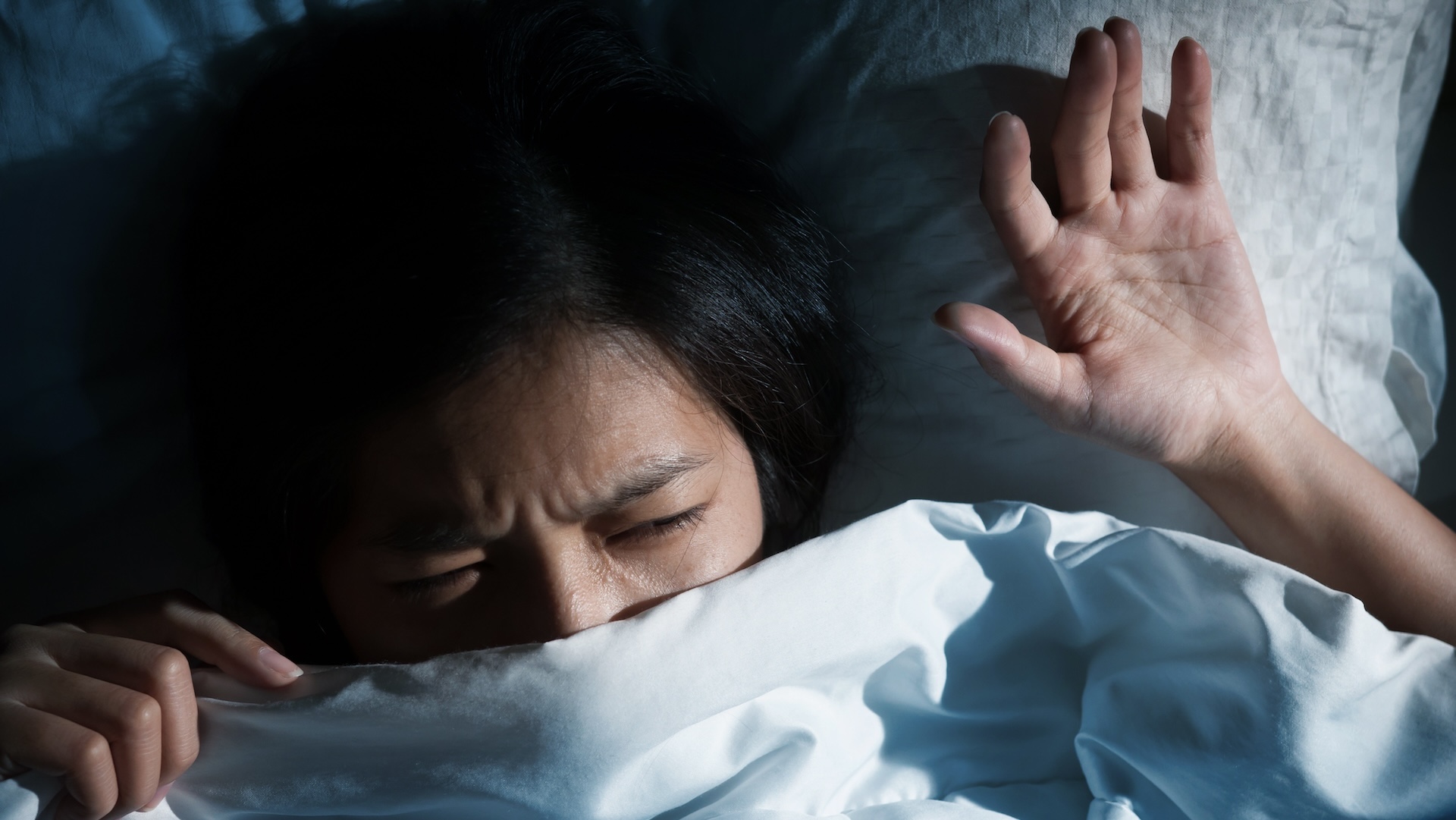
Nightmares could potentially signal the start of a flare for some patients with the autoimmune disease lupus, new research hints.
For some patients, this uptick in vivid bad dreams began over a year before they experienced any symptoms commonly tied to lupus, such as joint pain and rashes. Their "horrific" nightmares often involved falling or being attacked, trapped or crushed, they said.
These new findings do have some limitations, as they're drawn solely from surveys and interviews — but they may begin to unravel experiences commonly reported by people with lupus.
"Neuropsychiatric symptoms are often talked about between patients in online support groups," said lead author Melanie Sloan, a researcher in the Department of Public Health and Primary Care at the University of Cambridge. "But we previously found that they were rarely or never reported to their doctors by over half of patients."
Related: Teen's year-long case of depression and seizures caused by brain-injuring autoimmune disease
In the study, published May 20 in the journal eClinicalMedicine, Sloan and colleagues probed neurological and psychiatric symptoms — such as depression, anxiety, cognitive dysfunction and disturbed dreaming — in people with systemic lupus erythematosus. This disease is characterized by inflammation and damage to bodily tissues.
Overall, they surveyed 676 lupus patients about their experiences with 29 different neuropsychiatric symptoms, as well as surveyed 400 clinicians about their knowledge of such symptoms in lupus.
Over two-thirds of the surveyed patients had experienced at least one symptom on the list. Fatigue and cognitive dysfunction were most common symptoms, affecting about 67% and 61% of the participants, respectively. Sleep issues — including insomnia and disrupted dreaming — followed closely behind.
About one-quarter of the patients with nightmares said their bad dreams emerged around the time of their first-ever lupus symptoms. For about one-third, the dreams started long before any typical lupus symptoms.
In interviews, some patients said they noticed their nightmares often ramped up before their symptoms flared. However, many only recognized this pattern after being asked about the timing of their bad dreams, and others simply attributed them to stress.
About 16% of participants reported hallucinations, meaning false perceptions — usually seeing, hearing, feeling, or smelling something that isn't there. Roughly 12% reported delusions, or unshakeable false beliefs. These symptoms tended to emerge more than a year after people's main lupus symptoms.
Most of the clinicians who participated in the study thought signs of mental health issues would arise around the same time as physical symptoms. The discovery that some symptoms, like nightmares, seem to precede flares hints they could act as a warning system for some patients.
"If this [symptom progression] was documented for each patient, it could lead to earlier support or medication which may then stop or reduce the flare," Sloan told Live Science. Flares can cause organ damage and even death in some cases, so treating a flare earlier is of key importance, she said.
The study did have some limitations; for example, it asked patients to self-report their experiences from memory, which can produce unreliable results. It also didn't address why these neuropsychiatric symptoms might arise in lupus.
At this point, "the concept is that autoimmune diseases often affect the brain directly, leading to psychiatric symptoms," said study co-author Dr. James Bourgeois, a psychiatrist and health sciences clinical professor at the University of California, Davis.
Despite its limitations, "this research is an important step toward characterizing neurological disturbances," Mark Hillen, a neuroscientist and a spokesperson for the ELZA Institute in Switzerland, told Live Science over WhatsApp. "It will help target future research and potentially resolve a great unmet need for these patients' quality of life."
In future studies, the researchers want to follow rheumatology patients with a range of conditions over time, to track patterns in their neuropsychiatric symptoms and flares. Ultimately, the goal is to build a better picture of what these diseases really look like in patients and how they can be spotted and treated as early as possible.
This article is for informational purposes only and is not meant to offer medical advice.
Ever wonder why some people build muscle more easily than others or why freckles come out in the sun? Send us your questions about how the human body works to community@livescience.com with the subject line "Health Desk Q," and you may see your question answered on the website!







